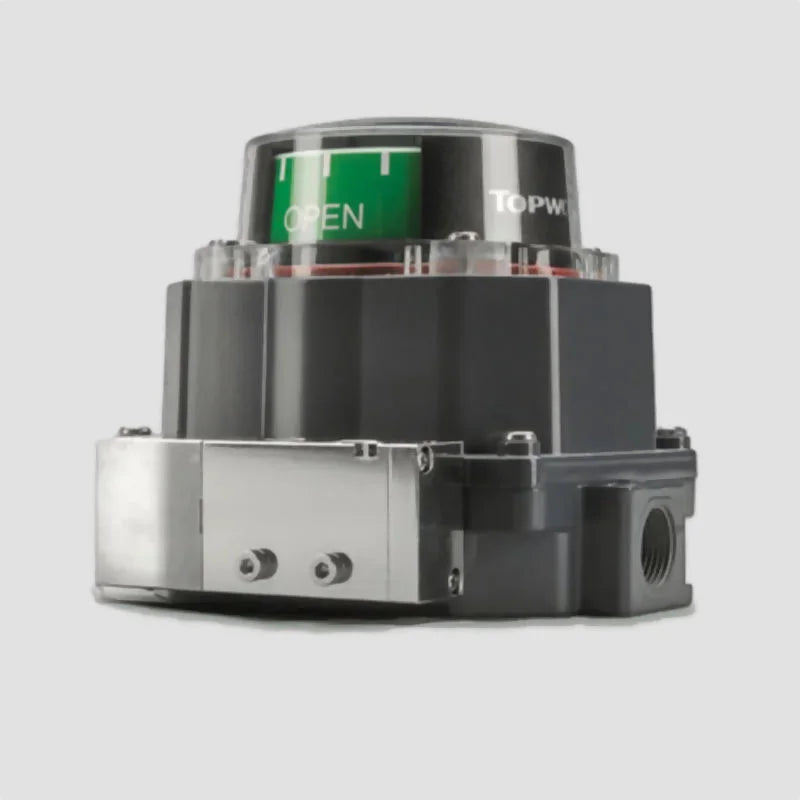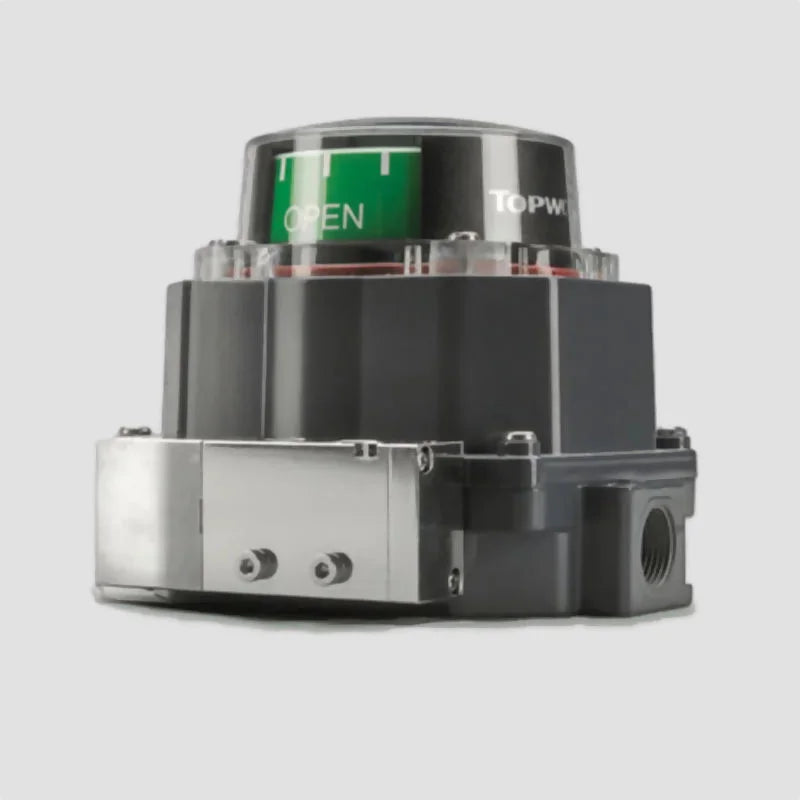Topworx Switchboxes
TopWorx Limit Switch Box TVL-R2WGNMM000006729 Valve Monitor
TopWorx Limit Switch Box TVL-R2WGNMM000006729 Valve Monitor
Couldn't load pickup availability
The TopWorx TVL-R2WGNMM000006729 Limit Switch Box is a robust and compact valve monitoring solution, built for reliable performance in industrial environments. Designed by TopWorx, a division of Emerson, this valve monitor ensures accurate open/closed position feedback for quarter-turn pneumatic actuators used in a variety of process applications.
With its dual SPDT mechanical switches, NAMUR mounting interface, and IP67-rated enclosure, this model is made to endure harsh environmental conditions without compromising accuracy. Whether installed in a chemical plant, food and beverage facility, or water treatment plant, the TVL-R2WGNMM000006729 provides long-lasting durability and consistent performance.
🔑 Key Features:
2 SPDT Mechanical Switches: Provides clear electrical feedback for valve position
NAMUR Mounting Standard: Ensures compatibility with a wide range of actuators
Weatherproof IP67 Enclosure: Protection against water, dust, and contaminants
Visual Dome Indicator: Easy-to-read valve status at a glance
Corrosion-Resistant Housing: Engineered from glass-filled polyester
Dual Cable Entries: Flexible wiring with 2 × 1/2” NPT conduit ports
Industrial Grade Build: Designed for tough operating conditions
Simple Installation: Pre-wired switches reduce commissioning time
📊 Product Specifications
| Specification | Details |
|---|---|
| Model | TVL-R2WGNMM000006729 |
| Manufacturer | TopWorx (Emerson) |
| Series | TVL Series |
| Switch Type | 2 × SPDT Mechanical Switches |
| Visual Indicator | Dome-Style Open/Closed Indicator |
| Mounting | NAMUR Standard |
| Enclosure Protection | IP67 |
| Conduit Entries | 2 × 1/2” NPT |
| Housing Material | Glass-Filled Polyester |
| Temperature Range | -40°C to +85°C |
| Certifications | CE, CSA, ATEX (application-dependent) |
| Application Use | Pneumatic Actuators, Valve Automation, On/Off Services |
The TopWorx TVL-R2WGNMM000006729 is engineered to deliver precise valve position monitoring with dependable performance in even the most challenging conditions. Its rugged build, ease of installation, and accurate feedback make it a preferred choice for operators looking to enhance system control and uptime.
📞 Need assistance or want to place an order? Contact our team today to get started!
Share

Enquire Online!
FAQ's
What is the difference between a valve and an actuator?
What types of actuators are available?
The main types of actuators are:
Pneumatic actuators – use compressed air for fast, reliable operation.
Electric actuators – use electrical power for precise control.
Hydraulic actuators – use fluid pressure for high-torque applications.
Each type offers unique advantages depending on the environment, media, and system control needs.
How do I choose the right actuator for my valve?
To select the correct actuator, consider:
Valve type and torque requirement
Power source available (air, electric, or hydraulic)
Operating environment (temperature, humidity, hazardous area)
Control signal type (on/off or modulating)
Matching actuator torque and compatibility with the valve’s ISO mounting ensures reliable performance.
What are the main types of valves used in automation?
The most common valves in automated systems include:
Ball valves – for tight shutoff and quick operation.
Butterfly valves – for larger flow control with compact design.
Globe valves – for precise throttling and flow regulation.
Check valves – to prevent backflow.
Gate valves – for full bore flow isolation.
What’s the difference between a double-acting and spring-return actuator?
Double-acting actuators use air (or power) to both open and close the valve.
Spring-return actuators use air to open (or close) the valve, and a built-in spring to automatically return it to a safe position when power or air is lost — ideal for fail-safe operation.
How often should valves and actuators be serviced?
Regular maintenance intervals depend on operating conditions, but a good rule of thumb is to inspect every 6–12 months.
This includes checking for leaks, lubrication, seal wear, and actuator responsiveness to prevent unexpected downtime.

